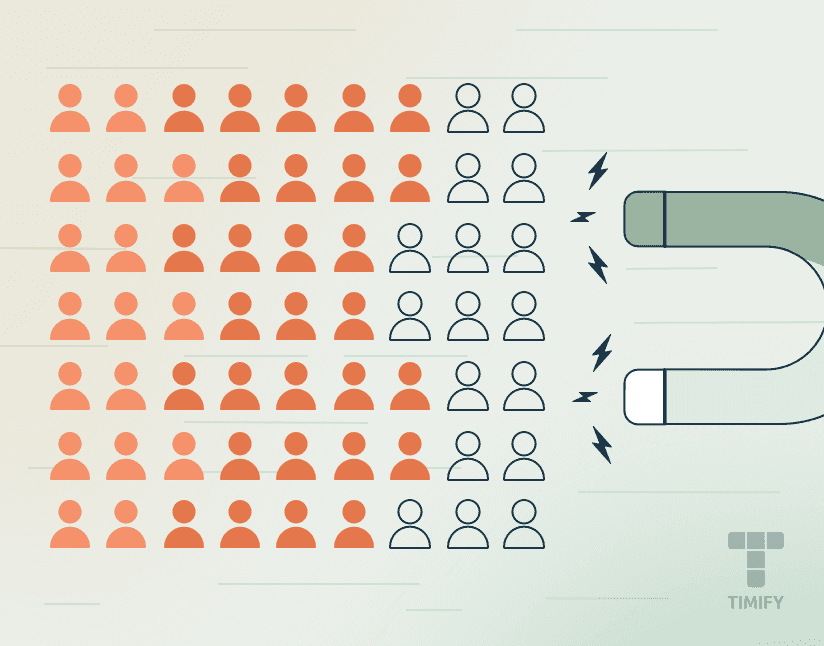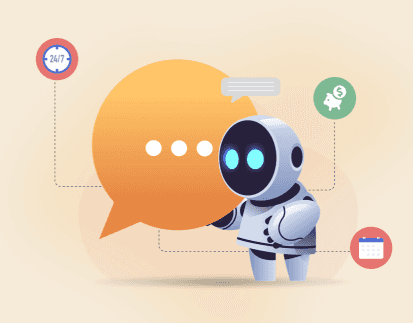

Cory Plachy
Cory Plachy is the Senior Marketing and Communications Manager at Convoso, the leading contact center software for powering sales and lead generation.
Business growth relies on a lot of things, including – crucially – customer retention and loyalty. So, what do you do when customers seem to keep leaving instead of becoming brand loyalists?
If you can’t count on customers coming back, it’s much harder to be sure your products are truly successful. However, the problem doesn’t always lie with the products themselves- most of the time, there are a host of other reasons customers don’t stay loyal.
We’re going to investigate the major reasons why customers leave, as well as cover the best things you can do about it.
Why Do Customers Leave?
The exact reasons vary from customer to customer, although there are always a few common ones that crop up repeatedly.
Bear in mind that in some cases, customers will have experienced a combination of two or more of the following driving factors. Also, it’s important to note that every customer’s limit is different. For example, some customers will put up with bad website design twenty times, only to suddenly snap on the twenty-first.
With that said, let’s take a look at the main reasons why customers leave.

1. Poor Customer Service
This is an area where one bad experience can make all the difference.
Poor customer service leaves your customers frustrated, angry, upset, and/or feeling like they’ve wasted their time and effort. That’s particularly awful if what they were looking to do by getting in touch was leave feedback, which you could’ve used to improve and grow.
From customer service agents with insufficient training to very long queues, lots of things can lead to bad experiences with customer service. The unifying factor is that someone who paid for your products reached out to you, and came away from the interaction feeling negatively about your company.
2. No Strong Customer Relationships
Customers don’t stick around when they’re clearly not being valued as individuals, or when your company isn’t putting in the work to get to know them.
You can think of it in similar terms to a friendship. Just because someone calls you their friend, that doesn’t mean you’d necessarily stay friends with them if they aren’t doing anything to maintain that friendship. If they don’t reach out, talk to you, or make an effort to stay close, they won’t stay your friend for much longer.
In the same way, customers don’t want to feel like a number on your list. You need to actively improve the customer experience for them to stick around. Customers want to know that you value them and their hard-earned money, otherwise they’ll feel like they’re not getting anything from being your customer.

3. Financial Pressure
All over the world, inflation and costs of living are going up. This has many unfortunate side effects, including tighter budgets for customers.
This reason often doesn’t reflect poorly on you as a company. If a customer is suddenly struggling to pay for all the things they want to buy, they’re more likely to drop something they like over something they need. That can make it all the more frustrating for you as a business.
However, in many cases, customers will use financial pressure as a motivator to closely examine all the places where they’re spending money. If your company falls short in any way, that will make them more likely to drop you than they would if you were their number one.
4. Poor Website Design
Have you ever tried to open a website on your phone, only to find that the font is tiny and the links don’t work? That tends to happen when websites are designed with laptop or desktop users in mind, and without catering to mobile users.
If your website gives off the feeling that you didn’t conduct basic usability testing for all devices, you’ll lose customers because of it. They’ll feel you didn’t make them a priority, which drives them away and into the arms of competitors.
5. Limited Outreach Attempts
Many customers won’t buy something they’re not absolutely sure about, particularly if it’s a first-time purchase. And if your agents aren’t connecting with those would-be customers, they can’t convert them to loyal customers or convince them to stay.
Companies that use modern tools like an auto dialer won’t typically struggle as much with this, as their contact center employees are automatically reaching out as much as they can. On the other hand, companies that think a single outreach attempt is enough will soon find that they’re losing customers.
Boosting Retention: Top Tips
Customers leaving doesn’t have to be a problem that affects you badly, especially when you know how to protect against losing them. Implementing the right best practices can increase your retention rates and minimize your losses.
Personalize
Personalization is one of the top ways to increase your retention rates.
It’s all about using customer data to provide a more individualized experience, such as tailoring recommendations to customer preferences or addressing customers by their name instead of something generic like ‘dear customer’. In a word, it humanizes your company.
Personalization also lets your customers know that they’re not a faceless entity to you, but a unique person with individual tastes, preferences, and needs. This helps a lot with another key element of preventing customers from leaving: strong relationships.

Build Lasting Customer Relationships
Instead of letting customers slip away through neglect, ensure you’re putting in active work to show them you care and keep them coming back.
You can do this by offering amazing customer service, checking in with them regularly, offering amazing deals (see below), and much more.
You’ll also want to create a satisfying balance between automated customer service that’s always available, and agent-powered customer service that provides a human touch. This helps customers remember that you’re always there to give them a hand, even when agents aren’t available. It also shows that you’re keen to make a human connection with them at the same time.
Reward Customer Loyalty
One of the best things you can do to stop customers from leaving is to give them compelling reasons not to. With special offers, loyalty programs, and reward schemes, you show them that you value their repeated purchases and give them incentive to stick around.
It can also be a good idea to outright thank them every now and then. This lets them know you’re super happy to have them around, and reminds them that there are real humans behind your brand name.
Also, rewarding customer loyalty has the added bonus of encouraging further spending rather than passively keeping customers around.

Focus on Sustainable Customer Acquisition
There’s more to attracting new customers than just numbers. Your goal shouldn’t just be to boost your one-time purchases as much as possible, but rather to create brand loyalists that will keep investing their money into your products over time.
This attitude should be reflected in every aspect of your customer acquisition plan.
For example, your contact center agents should use an outbound call script that encourages leads to stay engaged with the brand, and that helps guide existing customers towards further purchases.
Use the Right Tools
The best part about living in a highly digitized age is that there’s a tool for just about anything – and you can use that fact to your advantage.
Do you need to optimize your agents’ workdays? Try an automatic scheduling tool that does this for you, arranging their appointments and meetings as efficiently as possible. Do you want to send out mass emails to promising leads? Use the best email finder tools to create lists of candidates in seconds.
In other words, there’s always something you can do to help your company run more smoothly when it comes to modern tech. That’s why it’s a good idea to be constantly looking for new tools that can help you improve and provide better experiences to your customers.
Assess and Reassess Your Approach
Customer retention is all about continuous improvement over time.
While it’s always great to transform and improve your approach from one day to the next, this kind of radical change doesn’t create a lasting impact. What’s modern and cutting-edge today might become outdated by next year, for example.
That’s why you’ll want to dedicate time to checking over your plan and gauging its success on a regular basis.
One valuable metric to consider is the Net Promoter Score (NPS), which measures customer loyalty and satisfaction by asking them a simple question: "On a scale of 0 to 10, how likely are you to recommend our company to a friend or colleague?"
This lets you identify problems as soon as they crop up, and develop strategies to address them. It also lets you patch any weak points while further enhancing your strengths, which leads to even better retention rates on the whole.

Final Thoughts
While it’s not possible to keep every single customer coming back, you can always work on your retention rates by addressing the major reasons why customers leave in the first place.
Once you can narrow down the top reasons why customers aren’t staying, you can start to plan your response. An ideal retention strategy should always address the main causes driving churn, but it should also include extra measures to keep customers engaged.
That way, you can be sure that your plan is as effective as it can be, and your customer loyalty and retention rates are as high as they’ll go.

About the author
Cory Plachy
Cory Plachy is the Senior Marketing and Communications Manager at Convoso, the leading contact center software for powering sales and lead generation As an adaptable and naturally curious Marketing Communications Manager, Cory channels years of content creation, marketing and sales experience into the world of SaaS communication. Here is her LinkedIn.
Related articles


